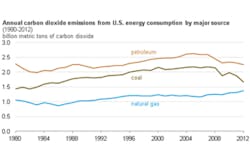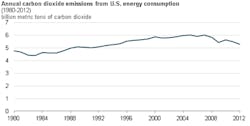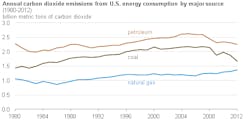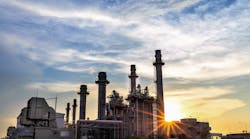Energy-related carbon dioxide (CO2) emissions in 2012 were the lowest in the United States since 1994, at 5.3 billion metric tons of CO2 (see figure below). With the exception of 2010, emissions have declined every year since 2007.
The largest drop in emissions in 2012 came from coal, which is used almost exclusively for electricity generation (see figure below). During 2012, particularly in the spring and early summer, low natural gas prices led to competition between natural gas- and coal-fired electric power generators. Lower natural gas prices resulted in reduced levels of coal generation, and increased natural gas generation—a less carbon-intensive fuel for power generation, which shifted power generation from the most carbon-intensive fossil fuel (coal) to the least carbon-intensive fossil fuel (natural gas).
Other factors contributing to the lower emissions include decreased demand for transportation fuels and mild winter temperatures that reduced demand for heating. The warm winter months during 2012 (particularly in the first quarter) more than offset a slight increase in cooling degree days during the summer months. EIA recently published preliminary data for January-December 2012 in the March 2013 edition of the Monthly Energy Review, which includes statistics covering all aspects of energy. EIA will publish a full analysis of 2012 energy-related CO2 emissions later this year.




